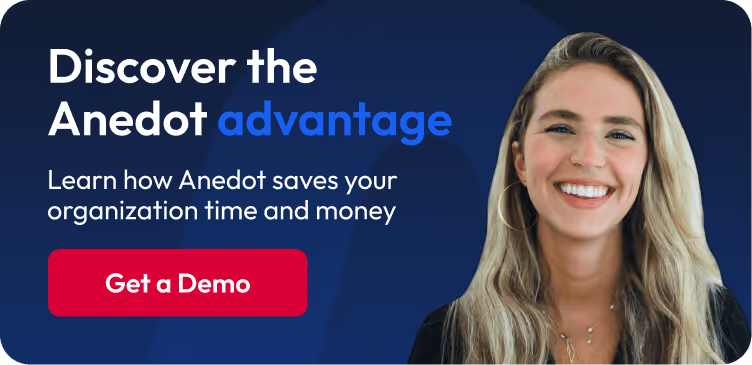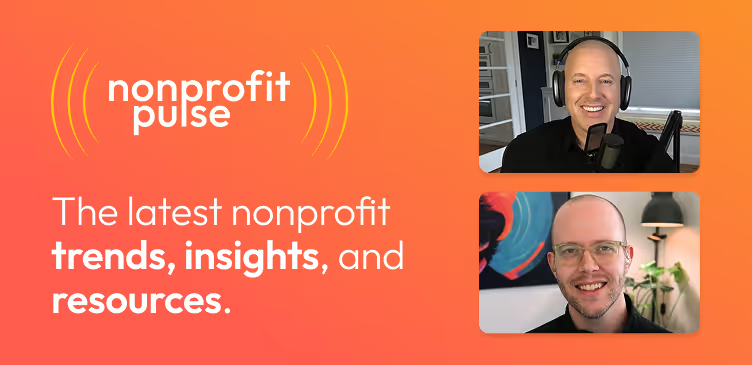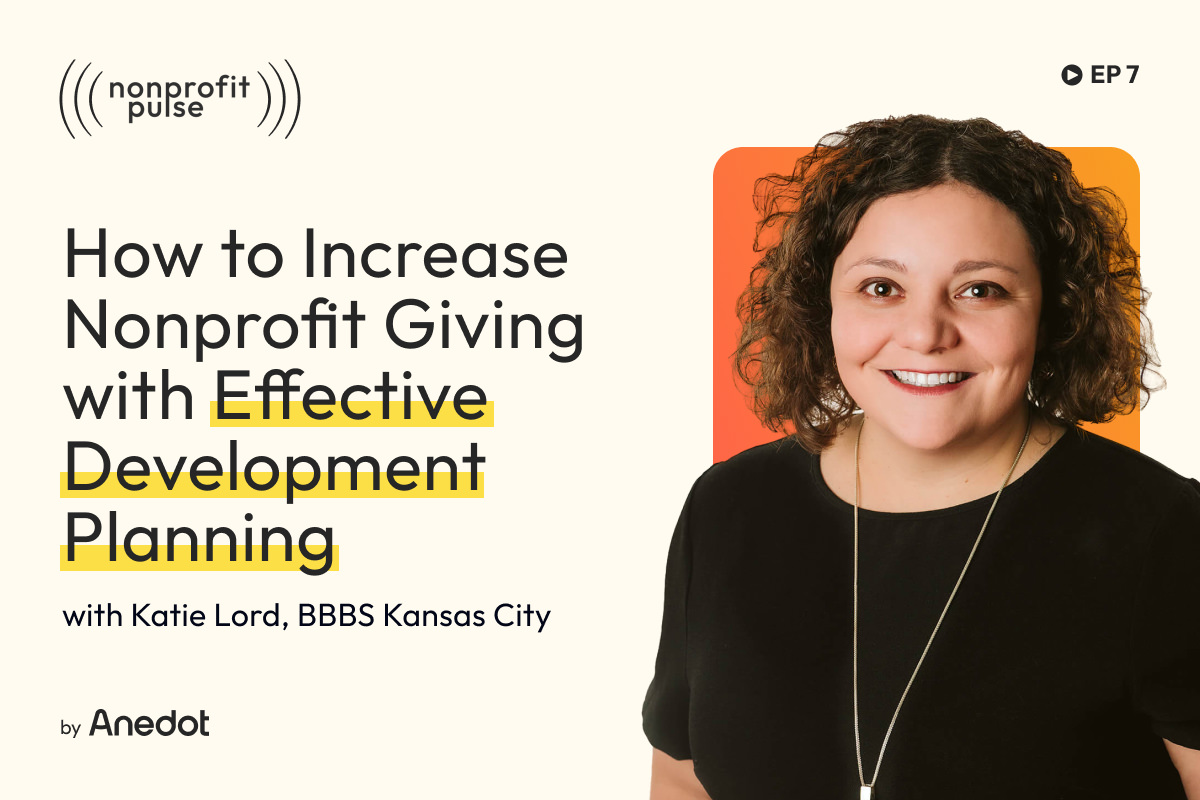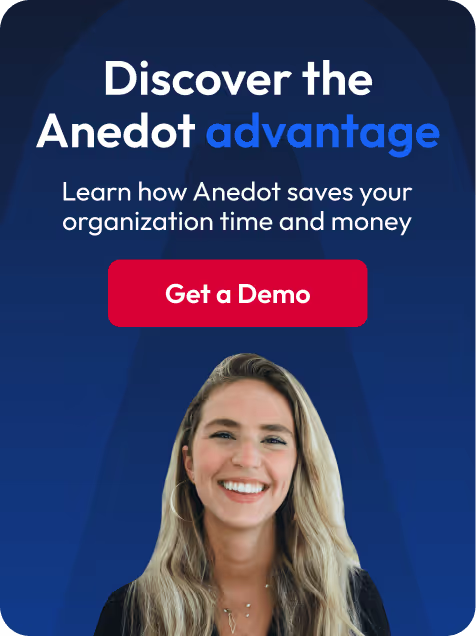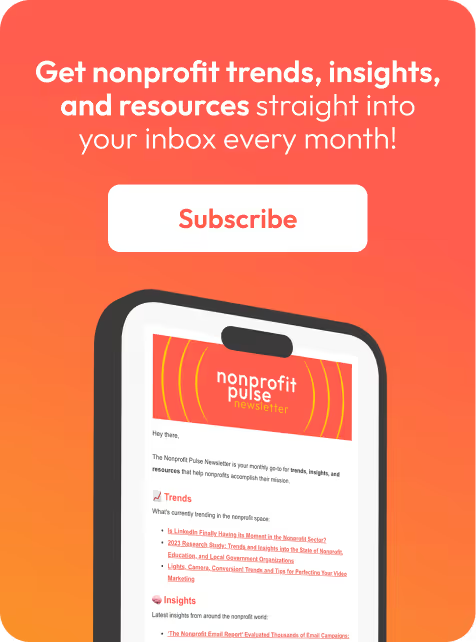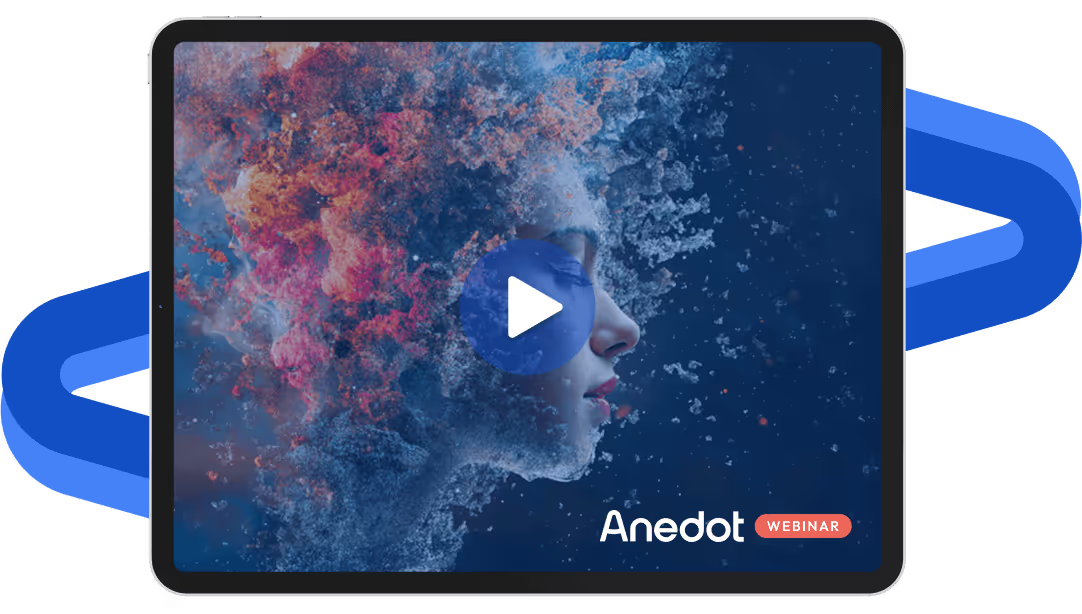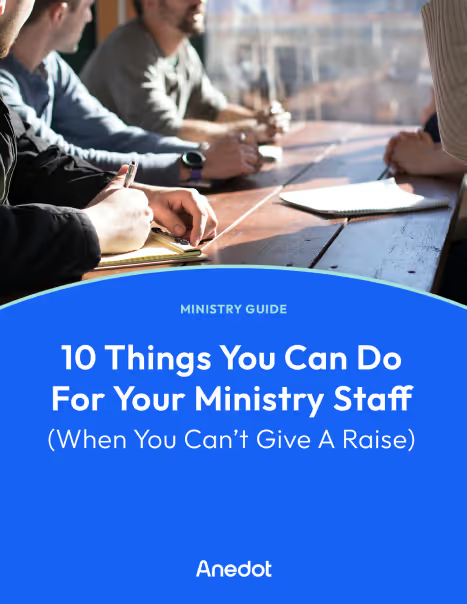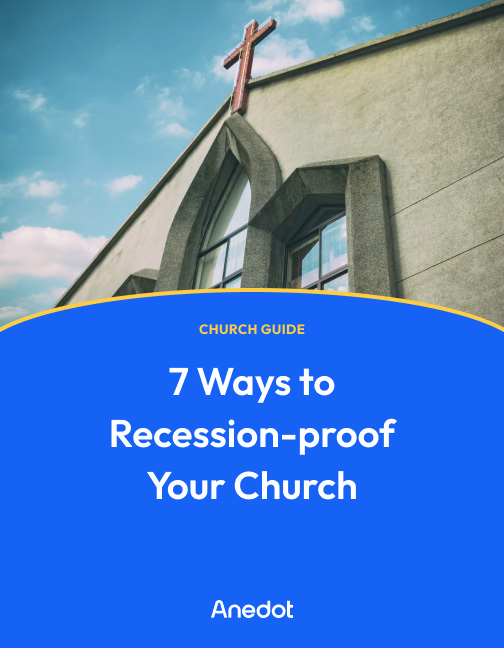Podcast episode transcript ↓
Josh:
Effective nonprofit development planning is essential for sustainable nonprofit growth.
Plan the work, and work the plan.
But, how should nonprofits begin? And how should leaders assess and measure success?
I'm Josh with Anedot, and welcome to Nonprofit Pulse, where we explore trends, insights, and resources that help nonprofits accomplish their mission.
On this episode, we're joined by Katie Lord on the topic of nonprofit development planning and how nonprofits can increase giving with effective planning.
For more than a decade, Katie has managed and led nonprofit development operations and initiatives at both nonprofits and nonprofit fundraising agencies.
Hey Katie, thanks for coming on Nonprofit Pulse.
Katie:
Thank you so much for having me.
I'm really looking forward to this conversation, Josh.
What is nonprofit development planning?

Josh:
Yeah, me too. So today we're talking about nonprofit development planning.
And so maybe just to start from the beginning, what is nonprofit development planning and why is it so important?
Katie:
Well, first off, I was going to say right away:
It's so important to plan your work and work your plan. And without doing that, sometimes we can really veer off and get distracted in what is already an incredibly distracting field and job.
So development plans really are your roadmap. They are your guide to how you are planning to effectively raise the funds that you and your organization need.
Breaking it down by different revenue streams and by different kind of goals and tactics and timelines.
So it's really your roadmap to success for what you're hoping to accomplish with your nonprofit fundraising team and in development over at least a year's time.
I don't really like them to go much longer than a year, but at least a year.
So you should have one annually and can even have some a little bit further out. But it's something you should carry with you.
Honestly, I say, you should have your development plan with you at all times.
You should probably have to print out three or four copies because they get so gross from being referenced and used over and over and over again.
Josh:
Yeah. So why do you think nonprofits and nonprofit leaders struggle to implement to build out a development plan? Why do you think that is?
Katie:
Well, I think we all have a little bit of shiny object syndrome.
And then we also have board members and other people sometimes that have brilliant ideas that can sometimes distract us from what we know are best practices.
And sometimes it can really just be asserting the knowledge that we have, which is, in my opinion, why you should have a development plan.
This is where you can sit down and say it's not on the plan. Thank you so much for that idea. We'll put it in the parking lot. We can pull it in later.
But I think development plans can be so hard because there are so many unknowns every year. And you sit down to author something.
And COVID was a perfect example, right?
You sit down, you author something in January, and by March, you're literally throwing it out and starting from scratch because you have no idea what's going to happen.
And things happen in our organizations every year. We might get a huge gift. We might lose a gift we were counting on.
And so I think that's why it sometimes can feel very difficult to sit down and write them.
But it's also knowing that the plan is flexible.
Just because you wrote it down doesn't mean that it can't take into account things that have happened in your organization, like a staff member leaving, a turnover of a executive director.
All of these things, of course, are going to affect your plan.
But I think getting down, sitting down and taking a day or two to even just bullet point write a kind of skeletal plan is really important for us to get all of our thoughts organized, understand where we need to be spending our time, and also hold us accountable to where we are spending our time for the results that we are or aren’t getting and then be able to pivot from that.
Nonprofit development planning best practices

Josh:
That's awesome. Yeah, so kind of leaning into some of the best practices when it comes to nonprofit development plans.
You know, regardless of what size your organization is, whether you're just getting started or maybe a mid-sized or even a large nonprofit, what are some of the development planning best practices that you would recommend?
Katie:
So first and foremost, again, kind of what I just said, bullet point your plan.
It should not be a long form diatribe about what you're hoping to accomplish.
First of all, if you're not going to want to read it and or write it, nobody else is going to want to read it.
So the things that are, I would say the most important to have are you need to have your goals and tactics.
So how much are you hoping to raise with online giving? How are you planning to do that?
You should have no more than three tactics.
There's a thing with our brain called the rule of three. You give somebody three things to do, they're going to do all three.
If you give people four things to do immediately, our brain shuts down and is like no, can’t do it.
And so we kind of hit analysis paralysis. So you should really only have three things listed under every goal that you're trying to achieve.
And you also need to have a timeline and an assignment.
So if everybody is in charge of the development plan, no one is in charge of the development plan. You need to have someone that is, kind of owns the development plan, but that also means that you can assign other people tasks.
Just because you own the plan doesn't mean you're expected to do the whole thing.
But you need to be able to give Katie her assignments and Josh his assignments and Steve his assignments and Mary hers, so that they understand in the plan, what am I accountable to and when am I accountable to it?
Which is why timelines are so important as well.
So that way at the end of the year or even the quarter, it's not like, well, I didn't know I was supposed to do that. Well, yeah you did. It was written down, it was in the plan.
There are ways you can sort plans. There's also ways you can assign volunteers things.
Let's not forget our volunteers and our board members.
They can also be assigned and should be in the plan so that everyone is really comfortable with where the organization is going and how we are going to be executing our fundraising.
I mean, I always laugh because it's like the plan really should be again, how we guide ourselves. Now here in Kansas City and then other places, like I can tell you daily, I hear like, well, we should just write to Mackenzie Scott.
Well, yeah, everybody thinks we should just write to Mackenzie Scott. It's not that easy. And also there's a great way to be like, oh, it's not in the plan or it wasn't on our calendar.
So we're not going to do that this year. But we can go from a different point of view or we can put it in the parking lot and maybe do it at some point.
But the plan is just really the most important backbone of what you're going to be doing.
And if you don't have one, it's so easy to get distracted by things like that, be at the end of the year and maybe have a deficit that you didn't realize you had.
Be thoughtful of how you pursue shiny object opportunities

Josh:
Yeah. Yeah, that makes total sense.
And before we get to mistakes to avoid, I want to kind of lean into opportunities and you know, we talked about shiny object syndrome.
What are some opportunities that may appear to be a shiny object that you shouldn't chase but hey, you know, you've seen them come into an opportunity for nonprofits.
You know, COVID was an opportunity for many nonprofits who are doing impactful work in the communities, churches and ministries, religious nonprofits, others who are, you know, sourcing frontline workers, resourcing frontline workers and things.
So maybe share a few opportunities you may have experienced or seen that may appear to be a shiny object.
But actually, were an opportunity to, you know, fundraise or increase revenue through circumstances.
Katie:
Well, I think one of the things that everyone is like we just need to get on the news or we just need to get on Good Morning America or something like that.
I've actually seen several organizations do that, though. And through those opportunities, take those clips.
We have one nonprofit in Kansas City specifically that did that, and then they really used just that, you know, highlight, if you will, to not only really kind of sink it back into the Kansas City community, but used it as an opportunity to reach out to other donors outside of the area that then became introduced and had an interest and started cultivating those relationships.
So I do think any sort of media coverage, if you can get it, can really be a good thing. Those clips can be valuable.
They can be reused over and over again and that feels sometimes like shiny objects.
But again, we saw so many great stories that happened during COVID. And let's be honest, like turning on the news is not always joyful.
And so now we're trying to have more of those highlight and spotlight moments. So I don't think that that's a sign of an object, as it used to be.
I think with how connected we are, it is incredibly important for us to use video as much as we can.
And so when you get those clips and things that you can use and really push out on nonprofit social media and beyond through email acquisitions, things like that, I think it's really important to not chase those.
But if they do come, to really lean into those and kind of maybe stop, and lack of a better term, take a pivot and lean into that opportunity and to grow it.
I mean, we also have had, we have had people here that have gotten MacKenzie Scott money. I think that that's fantastic. I think how you tell that story is also incredibly important.
When you do get really large donations, that is an opportunity to continue to build trust in your organization.
Show how you're going to impact and use the work and how others matching that gift or participating in that can really push you, your organization much, much further, and much faster.
So I do think that when those opportunities come, it really is stopping, being thoughtful about how you seize them, and that is when you kind of need to sit down and rewrite your plan.
We did see a lot of things change in COVID, and I think some of that is really good. If there's been a lot more focus on individual donors, donor experience, starting to be more focused on kind of the Amazon experience, if you will, with donors. And they're starting to expect that.
So however we can start to utilize these opportunities to create those moments for people is well worth the time and effort and shiny object chasing.
Josh:
I love that. Yeah. And video is such a huge opportunity for nonprofits to not only increase brand awareness, but build that trust, you know, show that we're real people doing real work with real impact.
And that's just an incredible, really necessity now.
And in 2024 that nonprofits be out there, be creating video, you know, trying to get as much media as possible. You know, newspaper ads and magazine ads and banners at events and fundraising galas are great.
But when you can put a face to a cause, it is massive in what you can do for reaching your community and building that trust.
Katie:
Yeah, people give to people.
People give to people, they don’t give to organizations or institutions.
So if they can see you, they can see the work. I know. I mean, it's just so funny.
And I'm totally guilty of this, but it's like we have this perfectionism in nonprofits where we’re like, it wasn't the best video.
That's authenticity. I would much rather see the, you know, phone shot video than maybe even the highly, highly produced video, because that's real.
And people are much more are excited about like, oh, that's great.
The food shipment came in or somebody is getting vaccines or they're giving children, you know, food or clothes or something. I mean, that's the work we do. It doesn't have to be glamorized.
Sometimes it's the beauty and the simplicity of just showing the human interaction that we have every day.
Josh:
Yeah. And, you know, being able to see behind the curtain like that, too. I think it sets a good expectation for volunteers when they show up, you know, to work at a food pantry or to work at an animal shelter.
It kind of shows behind the scenes and sets expectations up front so that people aren't shocked or feel like they had a, you know, a misconception about what this organization was about.
Katie:
Yeah, we all have the lovely glossy, staged photos.
Sometimes, but it's really the real work. And sometimes you're right, it's not glamorous, but it's honest.
And I think that's something more and more donors and people are looking for is just, you know, authenticity.
We do see trust in nonprofits going down a little bit. There's just trust in institutions across the board going down a little bit.
We're not, you know, just the only type of institution that is. But I think showing that creates more of like, okay, you know, there's nothing to hide.
There's no there's no lack of authenticity. It's just truly like, this is what it is. This is what a day to day looks like.
And yes, we have our big moments, but sometimes it's the littlest ones that have the biggest impact on those we're trying to serve.
Nonprofit development planning mistakes to avoid

Josh:
So I love, when talking to experts, I love talking about mistakes to avoid because you know, we all make mistakes.
We all go through mistakes. And if we learn from them, we become better. But I also like to learn from others so that I don't have to make those mistakes.
So just thinking about mistakes to avoid., when it comes to nonprofit development planning, what would you share?
Katie:
So the two biggest mistakes I see are first and foremost, it's the “nobody owns the plan.”
So you need to have like the plan, the author or owner. They're the only one allowed to change the plan.
So you're not running around with 37 different plans that people have marked up and have been like, I don’t like this, so I'm going to change it real quick.
So one plan that one person authors, if there is a change, everybody receives the change understands why the change was made.
So that is first and foremost.
And then also kind of going back to my nerdy like brain science stuff, we overestimate what we can do in a year and we underestimate what we can do in a decade.
So really, really, really take the time. I know we are all ambitious.
I know we want to, you know, set the world on fire, but really be thoughtful of, you know, do you have SMART goals? Are they reasonable? Are they time sensitive? Are they measurable?
You know, are they, do they make sense for your organization and also measure what matters?
I love data, so I want my development plan to see increases here. But if you don't need to know a number, don't measure it.
Sometimes I think we just measure things to measure things, but it's a vanity metric. It's like, well, we got a new score, our NPS score and this is great.
What are you going to do with an NPS score, you can't change it. That’s somebody's perception. Or we got 20,000 new likes on Facebook. Okay cool. How does that turn into anything?
It's more about measuring what truly has impact as far as your fundraising goes, or your volunteer management and volunteer recruitment.
So, it's measuring what matters. It is making sure that you are setting SMART, realistic goals, and it is that you have one development plan gatekeeper wizard.
Josh:
I love that. I love that.
Yeah. And even like just thinking of small dollar campaigns, you know, by measuring your small dollar campaign success, you may realize, wait a second, this is how you know, a large part of our community wants to support us is $5 a month or $10 a month. And so we need to increase that.
We need to run advertising for that. We need to lean into that.
And so measuring what matters is huge and it can inform your development planning for years or even decades to come.
Katie:
Well, most people who start out giving are $5 or $10 donors. You know, they're all testing us.
They're not the largest donors. And I think, let me get on my soapbox for a second.
You know, I think we have a problem with the democratization of giving, making people think their $5 and $10 doesn't matter.
But if your $5 and my $5 and 20 other people's $5 come in, we make real impact.
And the world is seeing that more and more. I mean, the rise of crowdfunding and other things like that. And I think that's something we need to not shy away from.
We need to really look at, okay, how do those monthly recurring donations and small monthly gifts or even just smaller gifts start to snowball in our organization?
And I definitely think that should be something in your plan that you pay attention to.
What to expect from leaning into nonprofit development planning

Josh:
So thinking through, you know, small nonprofits who may not have a very robust development planning or development plan in place or even have one at all, all the way up to large nonprofits, what can nonprofits expect by either starting or leaning into and expanding their development planning? What can they expect?
Katie:
I mean, there's no such thing as perfection, so don't author your plan with like this is the plan.
It's never going to change. I did, you know, I did the best plan ever.
No, things are going to happen and I'm still learning about development plans.
There hasn't been a year that I haven't changed the plan at some point midway through because something unforeseen happened.
So really we need to look at it as this is a living, breathing document. This is a roadmap like I said.
But sometimes we need to take left and right turns depending on what happens.
And the biggest thing is just to start. If you don't start, then you can't look back at past data.
You can't look back at things that worked or didn't work, and you can't look back and go, okay, we did try that five years ago, but this is how we did it versus okay, we can maybe try it now because we have a different way of approaching it.
And I think that that's what's really important too, is that you start to create kind of this history on paper that you can go back and look at, but also not kill kind of new fresh ideas and things like that.
You can kind of compare and contrast and especially even with larger organizations. I mean, with little ones, just getting started is great, just writing it down.
And then like I said, you're going to start to build on it as you grow.
And then with some of the larger ones, I mean, we can start getting really deep into, you know, the personalization and the segmentation and like I said, some of creating really some of those robust donor magic moments as we continue to grow.
And that should be one of the goals is creating those, you know, magic moments, as I say, with our donors, the more that we grow out our development plan, but we've all got to start somewhere and starting small is starting.
And that's to me sometimes just beauty in that.
Josh:
Yes. What are some of the friction or challenges that may come with starting your development plan or or even, you know, leaning in and making it more complex?
What’s some friction that nonprofit leaders can go ahead and expect and prepare for?
Katie:
So sometimes there will be the friction with the board of why do we have a plan? Why can we just go do what we've always been doing?
And I don't want to be you know, I want to follow this plan or be adhered because I have all of these great ideas. Sometimes they’ll be internal staff.
And this is really important as a leadership team that the development director, whoever is in charge of this plan, sits down because the marketing calendar might be different.
I need to know about that. There might be something that's going on in the program side.
I need to know that because by having that open communication that can help me write a better plan, maybe use some of those opportunities to help raise funds and bring awareness.
But then also it's not like, hold on marketing team, I need my year end giving appeal to go out and it needs to go out on Tuesday.
And it's Thursday. So, you need to stop what you’re doing. That is where I see huge friction.
So it's really just how you communicate it internally, how you communicate it to your key stakeholders and how you hold yourself accountable to using it.
And like I said, carrying it around, holding it out, bringing it and making that the document that you report off of.
Closing thoughts

Josh:
So, Katie, imagine you are standing on stage in front of hundreds of nonprofit leaders and you get to share one thing about nonprofit development planning.
One take away. What would you share with that audience?
Katie:
That’s a hard one, because I love developing plans so much.
I mean, again, I think to me the most important thing is have your plan, and work your plan.
This is not like a strategic plan where sometimes we put it on the shelf, you have to have it.
You have to understand why you have it in place in the first place. Otherwise you just wasted time and you need to work that plan over and over, year after year.
It doesn't have to be the same plan, but you have to work that plan.
Otherwise you're not going to grow. Or growth can be slower because you will not be as focused on where the highest ROI can be for your organization.
Josh:
Love it, love it.
This has been such a great conversation and is a huge topic, Katie, and we'll definitely have to have you back in and dive into some of the more particulars, like around segmentation or end of year appeals.
But thanks so much for coming on Nonprofit Pulse.
Katie:
Thank you so much for having me. Have a great day.
Josh:
Hey, thanks for checking out this episode!
If you enjoyed it, please share it with others or leave us a rating and review.
To find show notes and resources mentioned in this episode, visit Nonprofitpulse.com.
There, you can also sign up for the Nonprofit Pulse monthly newsletter where we send the latest trends, insights, and resources to help nonprofits accomplish their mission.
We'll see you next time.
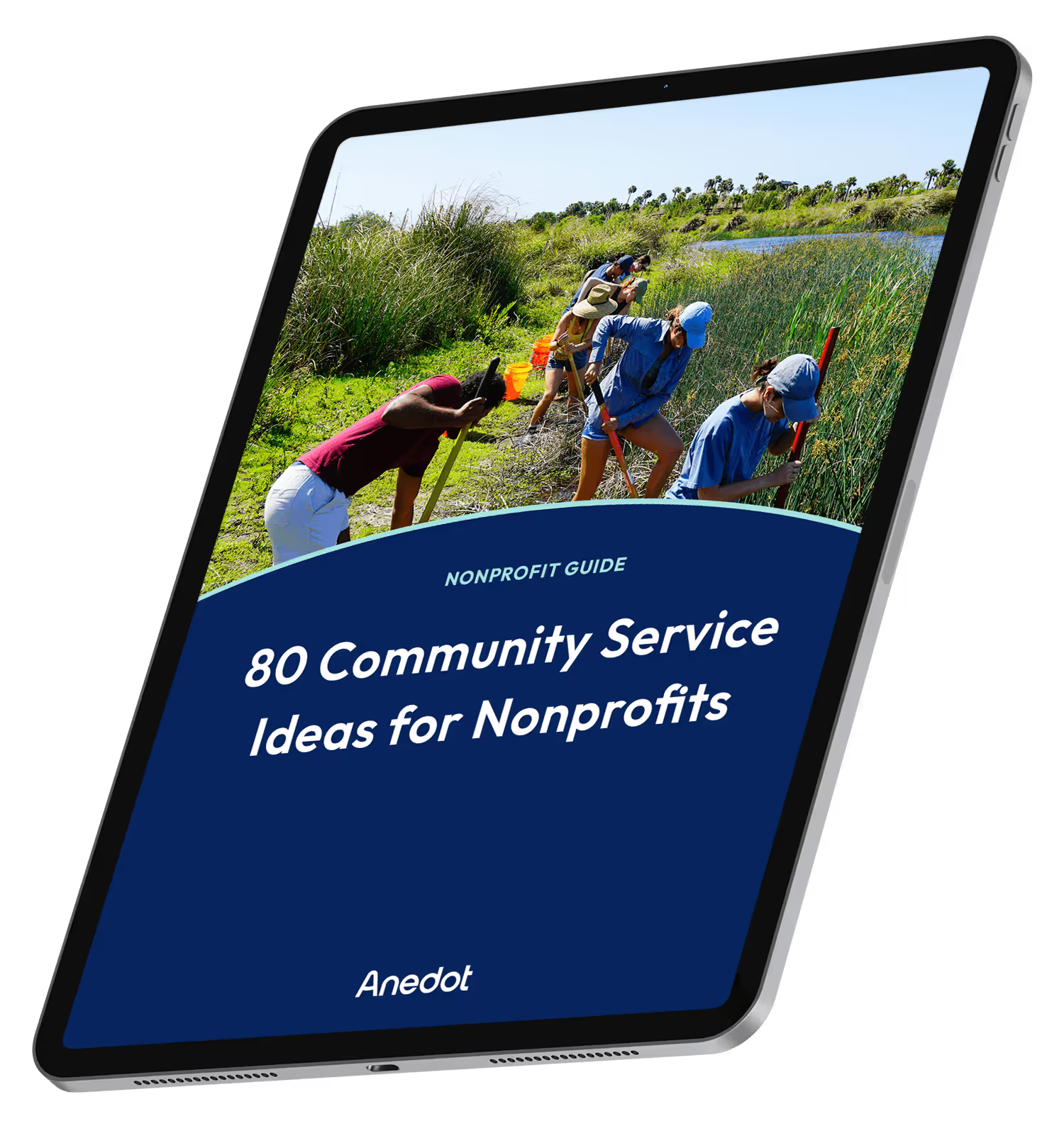
80 Community Service Ideas for Nonprofits
